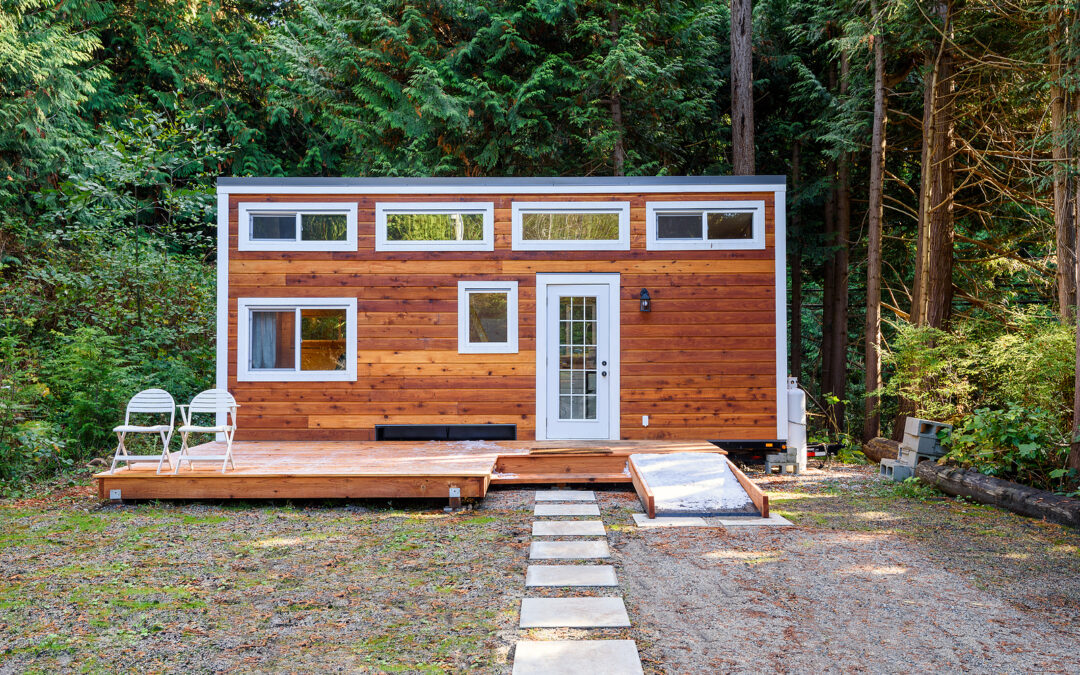Several new ADU laws in California go into effect in 2024, many of which ease restrictions and encourage the development of more ADUs in the Sunshine State. The legislation is aimed at addressing the housing shortage and affordability crisis in California, and that’s good news for all of us. Here is a run-down of the biggest and most important new laws, and what they change.
New ADU Laws in California 2024
- AB 1033: This law allows ADUs to be sold separately from the primary residence, subject to local ordinances and condominium conversion requirements. This means that homeowners can potentially create equity and wealth by selling their ADUs as stand-alone units, or buy an ADU without buying the whole property.
- AB 976: This law removes the owner-occupancy requirement for ADUs and junior ADUs (JADUs) until January 1, 2029. This means that homeowners can rent out both their primary residence and their ADU or JADU, or live in either one and rent out the other.
- AB 434: This law requires local agencies to post their pre-approved ADU plans on their websites by July 1, 2024. This means that homeowners can access standardized and streamlined ADU designs that comply with local zoning and building codes, and save time and money on the permitting process.
The new ADU laws in California aim to make it easier for homeowners to build ADUs in California, and to increase the supply and diversity of housing options in the state. There are lots of variations and limitations depending on your local jurisdiction, so contact us if you’d like some help sorting through those, while planning your ADU project.
Whether you’re interested in building an ADU for personal use, Airbnb, or a tiny neighborhood of like-minded individuals who develop their own currency and share resources in the woods in post-apocalyptic California, the possibilities are endless.
One of our favorite things about the new ADU laws in California is the creativity it allows room for, so we’ve rounded up ten of our favorite unusual tiny homes and ADUs to help you get your creative juices flowing in imagining your own project.
- The Converted Grain Silo by Kaiserworks is a 340-square-foot home in Phoenix, Arizona built inside of a 1955 grain silo. The house is 18 feet in diameter and features a 26-foot-high ceiling and a 17-foot operable slot window with spectacular views of the city. The interior is surprisingly cozy with it’s built-in furniture, a spiral staircase, and a mezzanine bedroom with an in-wall projector for the ideal movie-watching experience.
- The Lost Whiskey Cabin by GreenSpur is located on a 50-acre site along the Appalachian Trail in Virginia’s Hunt and Wine Country, this off-the-grid, 160-square-foot dwelling invites guests to unplug and reconnect with nature. The cabin is part of a larger development called the Lost Whiskey Club, which includes a communal farmhouse, a mobile whiskey bar, and more rental cabins. Its mountaintop perch and cantilevered outdoor deck—which floats above the trees and showcases a fire-warmed hot tub and a built-in hammock for taking in the landscape—are arguably its best features.
- The Octagon Castle Cabin by Jacob Witzling is a magnificent 135-square-foot castle with an octagon base and a stunning pyramid roof. The house was built by designer Jacob Witzling’s with the help of his lifelong friend Wesley Daughenbaugh. This off-the-grid ADU is powered by a 12-volt D/C system using deep cycle batteries. The cabin’s roof is covered with metal,chicken wire, and moss.
- The Mushroom Dome Cabin is a mycelial masterpiece located in Aptos, California. The cabin is built on a geodesic dome frame and surrounded by gorgeous towering redwood trees. The skylight at the top of the dome allows for some pretty incredible stargazing at night. The tiny space is also equipped with a kitchenette, a bathroom, and a loft bed.
- The Hobbit House is a charming stone ADU located in Chester County, Pennsylvania, and is inspired by the hobbit houses in J.R.R. Tolkien’s “The Lord of the Rings” series. The house is built into a hillside and has a round door, a thatched roof, and a circular window. The interior is cozy and features a fireplace, a kitchen, and a bedroom.
- The Tiny Tack House is located in Everett, Washington, and was built on a trailer bed, by the Tack Family. The house is 140-square-feet and has a living room, a kitchen, a bathroom, and a loft bedroom. It’s also equipped with solar panels and a rainwater collection system.
- The Tiny T Ranch and Chapel is located in Texas and is only 12 feet by 24 feet. The chapel is built on a trailer and has a stained glass window, a bell tower, and a cross on the roof. The chapel can seat up to 25 people and is often used for weddings and other events.
- This 3D-Printed Mars Pod named TERA was designed by AI SpaceFactory, and it’s made of a biodegradable 3D-printed material that is 3x stronger than concrete and far better for the environment. The design is the winner of NASA’s competition to design a home on Mars, but we can definitely picture this in a California backyard, surrounded by cypress trees.
- This Tiny Victorian is located in Portland, Oregon and is a 364-foot replica of a Victorian-style home complete with a living room, a kitchen, a bathroom, and a loft bedroom. The house is one of many available for rent at the Tiny Digs Hotel, an ADU hotel with a variety of vibes represented, but all great examples of what’s possible with a little ADU creativity, and a point of view.
- The Copper Fox is an incredibly unique treehouse tucked away in the woods of Pownal Maine. The design was conceived by Heidi Richards in a dream, and was built to be as energy efficient as possible. 85% of the wood used to build the ADU was sourced from local trees within 30 miles of the site, and many recycled materials were utilized in the build. The house is powered by solar energy, and insulted with hemp wool.
Click here to book a consult and let’s start planning your own dream ADU.

